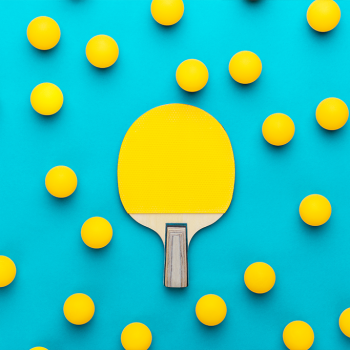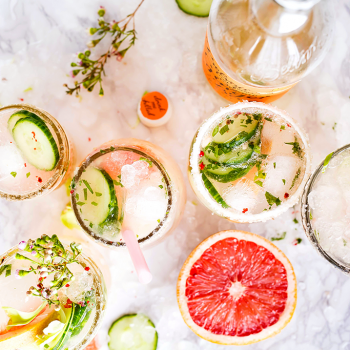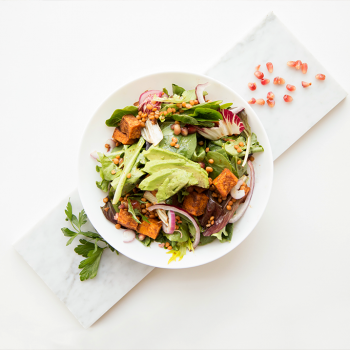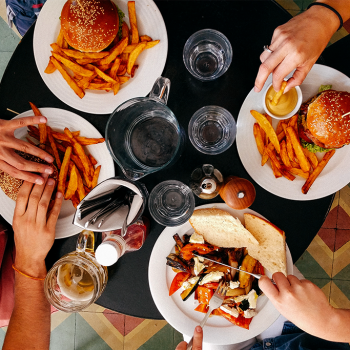Leslie Glass's Blog, page 242
September 8, 2019
Surprising Effects of Depression in Your Body
Depression is one of the most common mental health illnesses in the United States, affecting about 26 percent of adultsTrusted Source. Depression is technically a mental disorder, but it also affects your physical health and well-being. Learn more about some of the most common symptoms of depression, as well as how depression can affect your entire body, especially if left untreated.

Feeling sad or anxious at times is a normal part of life, but if these feelings last more than two weeks they could be symptoms of depression. It’s estimated that each year 17 million American adults will experience depression. However, clinical depression, especially left untreated, can interrupt your day-to-day life and cause a ripple effect of additional symptoms.
Depression affects how you feel and can also cause changes in your body. Major depression (a more advanced form of depression) is considered a serious medical condition that may have a dramatic effect on your quality of life.
Central nervous system
Depression can cause a lot of symptoms within the central nervous system, many of which are easy to dismiss or ignore.
Older adults may also have difficulty identifying cognitive changes because it’s easy to dismiss the signs of depression as related to “getting older.” According to the American Psychological Association, older adults with depression have more difficulties with memory loss and reaction time during everyday activities compared with younger adults with depression.
Symptoms of depression include overwhelming sadness, grief, and a sense of guilt. It may be described as a feeling of emptiness or hopelessness. Some people may find it difficult to put these feelings into words. It may also be difficult for them to understand as symptoms can manifest and cause physical reactions. Frequent episodes of crying may be a symptom of depression, although not everyone who is depressed cries.
You may also feel tired all the time or have trouble sleeping at night. Other symptoms include: irritability, anger, and loss of interest in things that used to bring pleasure, including sex. Depression can cause headaches, chronic body aches, and pain that may not respond to medication. It’s also sometimes an effect of certain neurological diseases, such as Alzheimer’s disease, epilepsy, and multiple sclerosis.
People with depression may have trouble maintaining a normal work schedule or fulfilling social obligations. This could be due to symptoms such as an inability to concentrate, memory problems, and difficulty making decisions.
Some people who are depressed may turn to alcohol or drugs, which may increase instances of reckless or abusive behavior. Someone with depression may consciously avoid talking about it or try to mask the problem. People experiencing depression may also find themselves preoccupied with thoughts of death or hurting themselves.
While there’s a 25 times greater risk of suicide, even during the recovery process, the American Association of Suicidology reports that treatment for depression is effective 60 to 80 percent of time.
Symptoms in children
Depression may be more difficult to detect in children who can’t articulate their symptoms. Behaviors you may want to look out for include persistent clinginess, worry, and unwillingness to attend school without improvement over time. Children may also be excessively irritable and negative.
Digestive system
While depression is often thought of as a mental illness, it also plays a heavy role in appetite and nutrition. Some people cope by overeating or bingeing. This can lead to weight gain and obesity-related illnesses, such as type 2 diabetes.
You may even lose your appetite entirely, or fail to eat the right amount of nutritious food. A sudden loss of interest in eating in older adults can lead to a condition called geriatric anorexia.
Eating problems can lead to symptoms that include:
stomachachescrampsconstipationmalnutrition
These symptoms may not improve with medication if a person doesn’t eat the correct diet. Sweets and foods high in carbohydrates may provide immediate relief, but the effects are often temporary.
It’s important to maintain a healthy diet when experiencing depression. Nutrients are essential to making sure the body’s neurotransmitters are firing right. According to a studyTrusted Source, the most common vitamin and nutritional deficiencies are.
omega-3 fatty acidsB vitaminsmineralsamino acids
Cardiovascular and immune systems
Depression and stress are closely related. Stress hormones speed heart rate and make blood vessels tighten, putting your body in a prolonged state of emergency. Over time, this can lead to heart disease.
Recurrence of cardiovascular problems is linked more closely to depression than to other conditions like:
smokingdiabeteshigh blood pressurehigh cholesterol
Untreated, depression raises the risk of dying after a heart attack. Heart disease is also a trigger for depression. The Cleveland Clinic estimates that about 15 percent of people with heart disease also develop major depression.
Depression and stress may have a negative impact on the immune system, making you more vulnerable to infections and diseases. One review looked at studies and found that there seemed to be a relationship between inflammation and depression, although the exact connection is unclear. Inflammation is linked to many illnesses, such as stress. Some anti-inflammatory agents have shown to benefit some people with depression.
Suicide prevention
If you think someone is at immediate risk of self-harm or hurting another person:
Call 911 or your local emergency number.Stay with the person until help arrives.Remove any guns, knives, medications, or other things that may cause harm.Listen, but don’t judge, argue, threaten, or yell.
If you think someone is considering suicide, get help from a crisis or suicide prevention hotline. Try the National Suicide Prevention Lifeline at 800-273-8255.
Sources: National Suicide Prevention Lifeline – Substance Abuse and Mental Health Services Administration
The post Surprising Effects of Depression in Your Body appeared first on Reach Out Recovery.
Death, Made In Mexico: Traffickers Embrace Fentanyl
From the LA Times:
Melissa and Daryl McKinsey first heard about “Mexican Oxy” last year when their 19-year-old son Parker called in tears.
“I need to go to rehab,” he said.
Several months earlier, a friend had given Parker a baby-blue pill that was stamped on one side with the letter M.
It resembled a well-known brand of oxycodone, the prescription painkiller that sparked the American opioid epidemic.
But the pill was actually a far more powerful and more addictive opioid: fentanyl.
Within weeks, Parker was crushing and freebasing up to eight pills a day.
Developed decades ago as a painkiller of last resort, fentanyl has surpassed heroin and prescription pills to become the leading driver of the opioid crisis and is now the top cause of U.S. overdose deaths.
Last year, more than 31,000 people in the United States died after taking fentanyl or one of its close chemical relatives, according to the U.S. Centers for Disease Control and Prevention. No other drug in modern history has killed more people in a year.
Fentanyl started appearing on U.S. streets in significant quantities in 2013, most of it produced in China and shipped in the mail.
Today, officials say the majority is smuggled from Mexico, where it is remaking the drug trade as traffickers embrace it over heroin, which is more difficult and expensive to produce.
While heroin is made from poppy plants that grow only in specific climates and take months to cultivate, fentanyl and other so-called synthetics are cooked from chemicals in makeshift laboratories in a matter of hours.

U.S. border agents have been intercepting increasing amounts of fentanyl. In January, they reported their largest seizure ever: 254 pounds of powder and pills hidden in a truck carrying cucumbers into Nogales, Ariz.
Parker McKinsey grew up 200 miles north of there, in the idyllic Phoenix suburb of Buckeye. American flags and wind chimes hang from porches, and traffic is so light that residents sometimes drive golf carts on the streets.
His parents raised him and his younger brother Bryan to believe in two things: God and baseball. Best friends, the boys were blond and blue-eyed and were both standout high school players, competing each summer in the nation’s top club leagues.
Parker, who had a rebellious spirit and had struggled with school, was devastated when he failed to attract interest from college teams. After graduating in the spring of 2017, he fell into a depression, and slipped from smoking marijuana into stronger drugs.
It was Bryan who urged his parents to heed his older brother’s plea for help.
“He could die,” Bryan warned.
The McKinseys dug into their savings to enroll Parker in a $20,000-a-month rehab facility.
The morning they dropped him off, his mother, an elementary school principal, thought to herself: “This is the worst day of my life.”
That day, however, was still to come. The culprit, again, would be a blue pill stamped with the letter M.
::Fentanyl has also had a profound effect in Mexico, where it has upended the drug economy, creating new opportunities for some traffickers and producers, while putting others out of business.
Ruperto Pacheco Vega wasn’t yet born in the early 1970s when strangers showed up in the hills of southern Mexico bearing gifts of poppy seeds. They showed locals how to raise the plants and how to extract the gum that oozed from their bulbs.
Three times a year, during the harvest, the strangers returned to buy the gum, which they eventually turned into heroin.
Pacheco was 8 years old when he began helping his father cultivate poppies on their hillside farm in the state of Guerrero. It was one of the few ways to make a living there.
He said poppy prices held steady for many years — until 2011, when they began to surge.
He didn’t know it, but the U.S. opioid epidemic was entering a new phase.
For years, American doctors had been overprescribing oxycodone and similar painkillers. But increased regulation had made those pills harder to get legally, so addicts turned to heroin.
In Guerrero, the going price for opium reached a peak of $600 a pound. Opium production in 2017 outstripped legal agricultural output in the state by about $132 million, according to the international policy think tank Noria Research.
By that year, poppy fields in Mexico covered 109,000 acres, more than triple the total six years earlier.
Pacheco, now himself a father, remembers that golden period happily. After a lifetime of subsisting on tortillas and beans, he could finally afford to buy his family beef.
He and other poppy farmers faced eradication campaigns by the Mexican government and had to navigate periodic turf battles between cartels, but the money kept flowing.
Then two years ago, prices plummeted. Today a pound of opium goes for less than $100.
Four of Pacheco’s five children have migrated to the U.S. in search of work. There is not enough money to pay his youngest son’s $40 high school tuition or to buy candles for the altar to the Virgin of Guadalupe they keep in the corner of their house.
In May, 43-year-old Pacheco harvested opium gum on his family’s plot of land for the final time. He replaced his pale pink poppy plants with corn.
A local heroin laboratory now sits abandoned.
When Pacheco asks the opium buyers what happened, they all say the same thing: “The synthetics collapsed everything.”
::
On a ranch in northern Mexico, a 23-year-old dons a hazmat suit, fires up a camping stove and begins cooking a gurgling cauldron of chemicals.
The key ingredient, smuggled from Asia, is a molecule called 4-anilino-N-phenethyl-4-piperidine.
He takes care not to let the mixture touch his skin. He’s seen other fentanyl cooks get high from the drug while preparing it, and has heard of others who have overdosed and died.
The cook, who spoke on the condition on anonymity, was a cattle rancher before he learned how to make fentanyl on the Internet.
“You earn more,” he said. “It is less work and less investment and more profit.”
He and his business partners, two other cooks in their 20s, work outside the city of Culiacan with the permission of the Sinaloa drug cartel.
In two years in the business, he said, he has acquired six vehicles. He recently opened a car wash as a means to launder money.
The original fentanyl cook was a Belgian chemist and pharmaceutical developer named Paul Janssen, who was looking for a painkiller more powerful than morphine when he synthesized fentanyl for the first time in 1960.
The U.S. Food and Drug Administration approved fentanyl eight years later to anesthetize patients during surgery. It was later developed into a skin patch for terminal cancer patients and others who had become tolerant to other strong opiates.
Years later, as opioid addiction rates soared in the U.S., chemists in China and elsewhere began making the drug illegally and selling it to Americans over the dark web.
U.S. drug dealers started sprinkling it into heroin and even cocaine to make their products more potent — in 2016, 11% of heroin samples analyzed by the Drug Enforcement Administration contained fentanyl or related substances, and that figure is believed to have significantly grown.Column OneColumn One is a showcase for compelling storytelling from the Los Angeles Times.
Overdoses skyrocketed. Fentanyl deaths exceeded heroin deaths for the first time in 2016. Last year, there were twice as many.
Fentanyl is 50 times stronger than heroin, and ingesting just a few grains — as little as a quarter of a milligram — can be deadly.
Public health experts denounced fentanyl as the third wave of the opioid crisis — after prescription pills and heroin — but Congress and the Obama administration were slow to act.
Meanwhile, Mexican drug traffickers came to understand the magnitude of the business opportunity and started importing fentanyl and the chemicals to make it themselves.
Officials say fentanyl can be up to 20 times more profitable than heroin.
It costs $32,000 to produce one kilogram of fentanyl, according to a task force of U.S. law enforcement agencies known as the Fentanyl Working Group. That 2.2 pounds can be used to manufacture one million pills with a street value of $20 million.
Fentanyl has another advantage for Mexican drug traffickers.
The narcotics trade in Mexico has become increasingly decentralized, in large part due to a decade-long strategy by the Mexican government to combat drug trafficking by capturing or killing cartel capos.
For smaller, leaner criminal operations, fentanyl is a perfect match. It’s much easier to buy precursor chemicals from smugglers than it is to control wide swaths of poppy-growing territory.
“It’s a very low barrier of entry,” said Steven Dudley, an expert on Latin American crime.
The days of the the Mexican cartel as “a monolithic vertically structured criminal group” are ending, he said.
“That model is a relic of the past,” Dudley said. “And the synthetic drug market may accelerate its demise.”
::
Inside an air-conditioned mall in an upscale neighborhood in Culiacan, a 43-year-old drug trafficker was finishing off a cup of ice cream.
The trafficker, who spoke on the condition of anonymity, said he too is part of an independent cell that works with the authorization of the Sinaloa cartel.
Keeping his business small was a choice he made after seeing law enforcement target powerful leaders, such as former Sinaloa chief Joaquin “El Chapo” Guzman.
“I’d rather be a small fish,” he said. “Because the authorities only go after the big ones.”
Dressed in flip-flops and a polo shirt, he said he got into the business 15 years ago, following in the footsteps of his father, a marijuana smuggler.
At first, the trafficker only moved pot too, but as U.S. states began legalizing marijuana, reducing demand from Mexico, he expanded to methampetamine and then heroin.
Over the last two years, demand from the U.S. dealers that he supplies has changed.
They used to ask for shipments that were 90% heroin and 10% fentanyl. Now it’s the other way around.
“It’s not that the customers are asking for it,” he said of fentanyl. “The dealers are. It’s more productive for them. They can make more money.”
Though fentanyl has been good for business, he said it weighs on his conscience. When drugs are cooked in independent laboratories, errors can occur, and word has trickled back from his network of U.S. dealers that certain batches were bad, and probably caused deaths.
“The truth is, I’m the least proud of sending that drug,” he said of fentanyl. “But if I don’t send it, I’ll be out of business.”
At least with marijuana, he said, “I knew it wasn’t going to kill anybody.”
He dreams of saving enough money to move his family to the countryside, of starting an organic egg farm and leaving the drug business behind.
Typically he traffics fentanyl powder, but he sometimes smuggles fentanyl pressed into pills.
Last spring, he sent a large shipment up to the Arizona border. They were blue, and stamped on one side with the letter M.
Melissa and Daryl McKinsey, preoccupied with helping Parker get clean, didn’t think they had to worry about their younger son Bryan.
He was the even-tempered child . The tattoo his parents let him get on his right forearm on his 17th birthday — a cross with a baseball in the middle — attested to his passions.
He had been a varsity pitcher since his freshman year and had attracted the interest of dozens of colleges. In early 2018, he flew out to St. Louis University for an official visit, and he told his mother he planned to commit to go there.
While his brother was still in rehab, Bryan was playing the best baseball of his life. At a game on May 3, he threw a fastball with the bases loaded in the final inning, clinching his team a spot in the state semifinals.
Five days later, he went into his parents’ room, like he did every evening, and kissed his mom good night.
The next morning, Melissa rose at dawn and went to work. Daryl, a delivery truck driver, was still out on an overnight shift.
Daryl didn’t think much of it when one of Bryan’s friends called, saying Bryan hadn’t texted her to say good morning like he did every day. Daryl drove home and opened the door to Bryan’s room, expecting to find him still asleep.
The lights were off, the television was on and Bryan was sitting up in bed wearing a baseball hat. Daryl touched his cheek. It was cold.
In Bryan’s pocket, police found several blue pills stamped on one side with the letter M. A toxicology report listed fentanyl as the cause of death.
His parents don’t know where he got the pills or why he took one. He didn’t have chronic pain, and he was well aware of his brother’s struggle with the drug.
“He could die,” Bryan had warned them.
The post Death, Made In Mexico: Traffickers Embrace Fentanyl appeared first on Reach Out Recovery.
September 7, 2019
Who Are You at College Parties?
College parties have been portrayed in movies and the media as wild happenings with little consequence. Beer pong, jello shots, hookups, and wild dancers are still rampant, but some people are making different choices. So, what kind of college partier are you?
1
Where do you usually hang out at college parties

Playing ping pong

Dancing, not drinking

Trying to get a game of twister going

Chugging everything in sight
2
If you don’t have a party on a Friday night you are

In your dorm reading a book

Checking out different drinks to make for the weekend

Lounging around, watching reality shows

Shopping for a new pair of heels
3
What's your go-to outfit for college parties

Black tee with either black or blue jeans and a beanie

Tight tank top and a mini skirt with flats or boots

Baggy college or sports tee, jeans, and a snapback

Tight dress, immaculate makeup, and five-inch heels
4
When in class, you usually

Paying attention to every syllable and digesting it all

Keep one earbud in, but mostly pay attention to the lecture

Surf the net or finishing work due for another class

Typing notes for class while messaging friends
5
What's your go-to meal in the cafeteria

Hot dog or a veggie burger

Soup and a sandwich; maybe the daily special

Salad or a veggie panini

Cheeseburger, chili, steak sandwich; unless it's Taco Tuesday
6
What's your major

Accounting/ business/ broadcast journalism/ philosophy

English/ communications/ history/ education

Sports broadcasting/ public relations/ math/ computer science

Art/ music/ theology foreign language/
Who Are You at College Parties?
Created on 07 Sep 2019
Quiz result
Ping Pong Champion

You have great concentration and when you’re really invested in something, whether it’s your major, job, or hobby, you give it your all. That’s why you’re the Ping Pong Champion! You hold that title proudly at parties, but in class or at the office, you know how to maintain your composure.
Share Your Result
Quiz result
Totally Adaptable

When you’re not out, you’re totally fine with a night in, working on your assignments and learning how to make new coffee flavors. You’ve been told a couple of times that if your chosen career path doesn’t work out, that you could make a living as a coffee shop owner. You like to keep things fresh and exciting.
Share Your Result
Quiz result
Social Butterfly

You like your snapbacks on sideways and your jeans super loose. You don’t want to admit it, but you’ve invested a lot of money in board games, which are all stacked neatly in the back of your closet. Your other hobbies include watching reality TV, comparing fake tan products, and critiquing sports teams when they play their absolute worst.
Share Your Result
Quiz result
Ms. Kappa Kappa Pukes-on-her-shoes

You have more pairs of shoes than DSW and Payless combined. Most of them have only been worn once and now they’re sitting under your bed, collecting dust with your forgotten English 101 anthology. You take shopping very seriously—it’s an Olympic sport for you and your sorority sisters. You also know the best way to get stains out of your most delicate heels.
Share Your Result
The post Who Are You at College Parties? appeared first on Reach Out Recovery.
September 6, 2019
Jailed doctor Barry Schultz, who made over $6,000 a day pushing opioids, shows no remorse
In the annals of “60 Minutes,” we have rarely come across a doctor like Florida physician Barry Schultz. Prosecutors say he wantonly prescribed and sold massive quantities of highly addictive opioids. As we told you last September, Schultz was sentenced to 157 years for his role in fueling the most devastating public health crisis of the 21st century. Last year, more Americans died of drug overdoses than in the entire Vietnam War. While Schultz ended up in jail, Mallinckrodt, the pharmaceutical company that flooded the nation with tens of billions of opioid pills, paid a relatively small penalty. The question now being debated in Congress and in federal court is: who is responsible for the opioid epidemic? The doctors who prescribed the pills or the opioid manufacturers and distributors who supplied them?
Dr. Barry Schultz is an inmate at Florida State Prison, where he will likely be incarcerated until the day he dies.
In this, his only interview, Schultz said he wanted to go on camera to explain that he has been singled out unfairly.
Barry Schultz: I’m a scapegoat.
Bill Whitaker: You’re a scapegoat.
Barry Schultz: I mean, I was one of hundreds of doctors that were prescribing medication for chronic pain.
Bill Whitaker: The– prosecutor called you a killer.
Barry Schultz: I see myself as a healer … In my mind, what I was doing was legitimate.
Doctor, you prescribed a thousand opioid pills to a pregnant woman.
In the early 2000s, Schultz was a pioneer on the wild west frontier of pain treatment. Doctors, drug dealers, opioid users and abusers were flocking to Florida, where powerful pain pills were being prescribed and dispensed by a new type of business, pain clinics.
Dave Aronberg: We had more pain clinics in the years 2010 and 2011 than we had McDonald’s, in those years. There was one street in Broward County, Oakland Park Boulevard, that had 31 different pain clinics on the one street.
Florida state attorney Dave Aronberg’s office prosecuted Barry Schultz. He told us pain clinics were loosely regulated medical offices where patients could pick up pills, usually for cash, few questions asked.
Dave Aronberg: You could get the prescription and get the drug right there on the spot. One-stop shopping. People would race down to Florida, because we didn’t have the same controls as other states. We fed the entire nation’s addiction.
This mob scene, shot on a cellphone in 2009, is inside a Florida pain clinic. Dozens of patients waiting to get their opioids. Schultz operated a clinic like this in Delray Beach, where he treated thousands of patients.
Bill Whitaker: How would you describe Dr. Barry Schultz?
Dave Aronberg: He was one of the most notorious drug dealers we had. He prescribed an egregious amount of pills to his patients. The numbers would shock the conscience.
DEA records show in 2010 one patient of Dr. Schultz was prescribed nearly 17,000 of the highest potency oxycodone pills in a seven-month period; another got more than 23,000 over eight months. That’s more than 100 pills a day. Business was so good, Schultz was making more than $6,000 a day prescribing and selling opioids to his patients.
Bill Whitaker: The numbers of pills that you were prescribing are astronomical. Who takes that many pills and puts them into their body? What were you thinking?
Barry Schultz: I was thinking that the patient was a genuine patient who had real chronic pain, whose complaints were legitimate, and that I was prescribing medication that they needed.
Bill Whitaker: Doctor, you prescribed a thousand opioid pills to a pregnant woman. I don’t think most doctors would prescribe a thousand aspirin to a pregnant woman.
Barry Schultz: I would like to stop.
Bill Whitaker: I would just like you to explain your thinking…
Barry Schultz: I would like to stop. This is not what I expected it… I believe it’s unfair.
Bill Whitaker: What is unfair, Doctor?
Barry Schultz: I am just uncomfortable with these charged questions.
Bill Whitaker: These are questions that people have. This is why you’re sitting here, wearing this jumpsuit.
Ultimately, he agreed to continue. He claimed some of his patients needed extremely high doses of opioids for long periods of time to alleviate severe, persistent pain.
Barry Schultz: And when I started treating people with chronic non-cancer pain, I felt it was unethical and discriminatory to limit the dose of medication. And if I had known that the overdose incidents had increased dramatically the way it had, I would have moderated my approach.
Bill Whitaker: Doctor, how could you have not known? All you had to do was pick up the paper.
In 2009, more than 2900 people died in Florida of drug overdoses, mostly from prescribed opioid pills. In one 16-month period, DEA records showed Barry Schultz dispensed 800,000 opioid pills from his office pharmacy.
Bill Whitaker: People have become addicted to these drugs. People have died–
Barry Schultz: Okay.
Bill Whitaker: –because of these drugs. People in your practice died from overdoses of opioids.
Barry Schultz: A person.
Bill Whitaker: One is enough.
Carol Tain: That monster ended my son’s life.
Carol Tain’s son David went to Dr. Schultz for pain management after a car accident. Schultz prescribed an assortment of pain pills even after David became addicted. In 2010, David died of an overdose of opioids prescribed by Dr. Schultz.
Bill Whitaker: So sh– should Dr. Schultz have prescribed these pain pills to him?
Carol Tain: No. He didn’t even examine him. He hadn’t seen him in four-and-a-half years. He just– just wrote– wrote out these scripts… As far as I’m concerned, he’s a murderer and– and not a doctor. He murdered my son. He – he didn’t need a gun. He used his pen to murder my son.
Schultz says he was inspired to prescribe high doses of opioids to his patients after attending a lecture by Dr. Russell Portenoy, who was the influential president of the American Pain Society. Portenoy traveled around the country giving lectures and made promotional videos like this one in 2000 touting opioids as wonder drugs, urging doctors to use them aggressively to relieve pain.
Dr. Russell Portenoy: The likelihood that the treatment of pain using an opioid drug which is prescribed by a doctor will lead to addiction is extremely low…
But ten years later, as opioid addiction exploded, Dr. Portenoy said he had been part of a broad campaign funded by pharmaceutical companies to encourage the widespread use of opioids.
Dr. Russell Portenoy: I gave innumerable lectures in the late 1980s and 1990s, in which I said things about addiction that weren’t true.
He said he believed at the time he was operating in good faith and was not unduly influenced by the pharmaceutical industry, still he has been named in dozens of lawsuits.
How can you not be responsible? How could you walk away from 500 million pills to a geographic area like the size of Florida?
Bill Whitaker: Dr. Russell Portenoy was paid by the drug companies and has said that there is no proof that these– that high doses of opioids are effective in treating chronic pain.
Barry Schultz: That may be true. But there is a doctor–
Bill Whitaker: It is true. So, there’s no science to back up what you were doing.
Barry Schultz: There’s only anecdotal information.
Bill Whitaker: I– I guess what I found troubling is (SIGH) your lack of– acceptance that what you did was wrong.
Barry Schultz: I don’t believe it was wrong.
Bill Whitaker: When you’re giving somebody 60 oxycodone a day, how could they not abuse it?
Barry Schultz: 60 a day is a large number, I admit.
Bill Whitaker: That’s a very large number.
Barry Schultz: But if it’s taken properly…
Bill Whitaker: How can you take 60– oxycodone a day properly?
Barry Schultz: Some people need that dose.
There is no scientific evidence to support that claim.
With so many opioids prescribed by Schultz and other unscrupulous doctors, pills started flowing in to the streets and resold for profit, what the DEA calls diversion. 66 percent Of all the oxycodone in Florida came from just one company: Mallinckrodt, one of the country’s largest opioid suppliers. Florida state attorney Aronberg told us, between 2008 and 2012, the company flooded the state with pain pills.
Dave Aronberg: Mallinckrodt sent 500 million oxycodone pills to the State of Florida, a state with the population of 20 million people. We’re talking about enough pills to give every resident of Florida 25 oxycodone pills.
Bill Whitaker: How is that possible?
Dave Aronberg: I mean, you’re talking about enough pills to create an entire state of addicts.
Internal Justice Department documents, obtained by “60 Minutes,” reveal that, “Mallinckrodt’s own data on Barry Schultz indicated that he was purchasing large amounts of oxycodone in a suspicious pattern indicating diversion.” Yet the company kept shipping the drugs to the distributor it knew was supplying Schultz. The company’s behavior was so flagrant it triggered a DEA investigation led by Jim Rafalski.
Bill Whitaker: So what role does Mallinckrodt play in this opioid crisis?
Jim Rafalski: They’re responsible.
Bill Whitaker: They are responsible.
Jim Rafalski: It– especially for the conduct in Florida.
Bill Whitaker: That’s a big statement.
Jim Rafalski: How can you not be responsible? How could you walk away from 500 million pills to a geographic area like the size of Florida? And knowing at the time this was occurring there was an opioid crisis there. That wasn’t a secret.
Rafalski, now an expert witness for states and municipalities suing drug companies, told us his team identified almost 44,000 orders Mallinckrodt should have reported as suspicious, which, the government says the company is required to do by law. Rafalski says Mallinckrodt reported none. But when DEA investigators handed their evidence to the Justice Department, government lawyers, fearing a long uncertain legal battle, decided not to pursue the case in court, but to settle instead.
Bill Whitaker: If you’d’ve gone after Mallinckrodt for everything you saw them doing, what would the fine have been?
Jim Rafalski: $2.4 billion.
Bill Whitaker: And the actual fine was?
Jim Rafalski: $35 million.
The penalty amounted to less than one week of the company’s annual revenue. Mallinckrodt declined to do an on-camera interview but told us it never sold oxycodone directly to Dr. Schultz, only to distributors. In a press release, the company denied ”it violated any applicable laws,” but said going forward, it would analyze all internal data and identify suspicious sales.
Now the pharmaceutical industry is coming under scrutiny. Last year, a congressional committee called the heads of the five leading drug distributors, the middlemen that ship the pain pills from manufacturers like Mallinckrodt to drug stores around the country. Mississippi congressman Greg Harper asked if they were complicit in causing the drug crisis.
Congressman Greg Harper: Do you believe that the actions that you or your company took actions that contributed to the opioid epidemic? Mr. Barrett?
CEO #1: No sir I do not believe we contributed to the opioid crisis.
Congressman Greg Harper: Dr. Mistandria?
CEO #2: Yes.
Only one of the five said yes. Now this House committee has launched an investigation into Mallinckrodt and other drug manufacturers. The Justice Department has formed a task force targeting opioid manufacturers and distributors.
As for Barry Schultz, shortly after our interview, he received a final sentence: 157 years. The longest sentence of anyone so far in this opioid crisis.
Produced by Ira Rosen and Sam Hornblower. Associate producer, LaCrai Mitchell.
This content was originally published here.
The post Jailed doctor Barry Schultz, who made over $6,000 a day pushing opioids, shows no remorse appeared first on Reach Out Recovery.
What Can You Do When You’re Flattened By Depression? Plan For It
This post is part of TED’s “How to Be a Better Human” series, each of which contains a piece of helpful advice from someone in the TED community; browse through all the posts here.
“Depression takes practice,” says Chicago-based health activist and writer Jessica Gimeno in a TEDxPilsenWomen talk. Wait — that sounds unrealistic and unwise. Depression just happens to a person, and if you’ve ever been seriously depressed, it’s something that you sincerely hope will never happen again, right?
“What I’m saying is that living well with depression takes practice,” clarifies Gimeno. “Being productive every day despite depression takes practice. Being a student or an employee with depression takes practice.”
Knowing how to live with depression is important for many of us — with more than 300 million people across the globe living with chronic depression, it’s the leading cause of disability worldwide. “With a visible disability, we assume it will take practice to cope, including things like physical therapy,” says Gimeno, who has a blog called Fashionably Ill. “Yet when it comes to depression, we think that a label and medication are enough to cope. It’s time to go beyond getting a diagnosis, into giving people actual coping mechanisms. Without coping mechanisms, we’re trapped in a downward spiral. Being depressed leads to falling behind; falling behind leads to more depression.”
After she was diagnosed with bipolar II disorder when she was in college, Gimeno was helped by therapy and medication. However, she was eager to find out how to continue living her life and get things done while she was depressed. In the absence of existing resources and dealing with other challenges to her health including myasthenia gravis (a debilitating autoimmune neuromuscular disease) and polycystic ovarian syndrome, she created her own strategies.
1. Be proactive.
It’s a cliche because it’s true — the best defense is a vigorous offense. Do you know what you’ll do the next time you’re depressed? “In order to make a plan, you need to know two things: your symptoms of depression and the strategies that work for you,” Gimeno explains.
While mental-health professionals and physicians have uncovered many common symptoms of depression — such as feelings of anxiety and hopelessness; changes in sleep, appetite and energy; inability to concentrate — Gimeno says it’s important for you to pinpoint your individual signs. It could be sleeping too much or barely sleeping at all, losing your appetite or wanting to eat all the time, excessive irritability or excessive apathy, or anything else. Your signs don’t have to be only physical, however — they may be specific behaviors. For example, writer Chris Dancy has noticed that when he’s feeling depressed he spends much more of his time using particular apps (in his case, Twitter, Fitbit and Facebook).
Next, you need to identify helpful actions that you can take as soon as these symptoms arise. Gimeno asks: “What do you need when you get depressed? Is it faith, is it family, is it friends, is it exercise, is it reading, is it listening to music?” Note: Your go-to activities should be ones that can truly make you feel better, not just cope, and also ones that won’t make you feel worse in the long run. While eating a pint of ice cream is one coping strategy, getting ice-cream with a friend or family member is a better tactic to take. Be prepared to act whenever you notice an episode of depression is beginning for you. As Gimeno says, “Know yourself, plan now, don’t wait.”
2. Zoom in on what’s most important for you to accomplish.
For Gimeno, this means prioritizing her to-do list. She says, “If something’s due today, it gets 4 stars; if it’s due tomorrow, 3 stars; sometime this week, 2 stars, next week [or later], 1 star. And when I’m depressed, I ignore anything that has less than 3 stars.”
Urgency isn’t only about getting things done, she says. It’s “also about being able to say no to non-essential tasks. So, meeting your work deadline is essential; the church bake sale is non-essential. When we say yes to everything, we amplify our stress.”
3. Figure out the difficulty of your tasks, and let this guide your actions.
Gimeno says, “When I’m depressed, I label all tasks as a 1, 2 or a 3. If it’s an easy task, it’s a 1; examples include eating breakfast or taking a shower. If it’s a moderately difficult task, it’s a 2, and a 3 is reserved for difficult tasks. For example, finishing a paper in college, scheduling an appointment with your child’s teacher, or meeting a difficult work deadline.”
If she’s in the midst of an episode of depression, she explains, “I focus on finishing all the 1 level tasks first. And every time I cross something off my list, even if it’s taking a shower, I feel empowered … And as I finish off all the 1 and 2 level tasks, I build the confidence to tackle the 3 level tasks.”
When it’s possible, she also tries to turn 3 tasks into 1s or 2s. For example, when she’s depressed, working out for 30 minutes is a 3. But working out for just 10 minutes makes it easier to accomplish, so that’s what she does.
Despite all her best efforts, plans and lists, Gimeno admits that there are still days when illness wins. Know that’s OK, and don’t add to your suffering by beating yourself up because you’re human. She says, “I want to share this with anyone who … fights depression or who loves someone that does. Yes, depression is real. But hope is real. Courage is real. Resilience is real.”
Watch her TEDxPilsenWomen Talk now:
This content was originally published here.
The post What Can You Do When You’re Flattened By Depression? Plan For It appeared first on Reach Out Recovery.
Kids Don’t Say ‘I Have Anxiety’; They Say ‘My Tummy Hurts’
By L August 27, 2019 August 28, 2019 Health, Lifestyle
“Mom, my tummy hurts.”
My daughter tells me this almost every night at the same time. She feels fine all day but when it’s bedtime and I’m turning down the lights, her stomach hurts.
Nighttime is when many kids anxiety intensifies. It’s dark, they’re alone, there are no distractions…
We have worked together to conquer her anxiety and she knows I will remind her that her stomach is actually just fine and it’s just her worry.
My son on the other hand, used to tell me his stomach hurt every morning before school. He had separation anxiety and didn’t want to be away from me.
Of course, instead of telling me that, he just said his stomach hurt.
Kids Don’t Tell You They Have Anxiety, They Say ‘My Stomach Hurts’
Why do kids say their stomach hurts?
Well, it’s because their stomach actually hurts.
The stomach is home to the enteric nervous system and is even often called your second brain. Big nerves and anxiousness create a real sensation in the belly area.
It makes for quite a cycle because as the anxiety creates a stomach ache, a stomach ache causes even more anxiety and it continues on.
One study discovered that more than half, or 51 percent of people surveyed who experienced stomach pains as children ended up with some type of anxiety disorder sometime in their lives.
The most important thing to remember about kids that often complain of stomach aches (assuming you have ruled out any real stomach issues) is that they are not making it up. They are not lying or doing it for attention. They’re body is taking their anxiety and manifesting it right in the pit of their stomach.
Source: LAM
This content was originally published here.
The post Kids Don’t Say ‘I Have Anxiety’; They Say ‘My Tummy Hurts’ appeared first on Reach Out Recovery.
Alcohol Math For Girls
Did you know when it comes to alcohol math girls may not be safe at any level of drinking? It’s biology. Girls are impaired after one drink and drunk after two. alcohol affects the behavior of your boys, of course, but not to the same degree or with the same adverse consequences. For boys, drinking is just a rite of passage and all too often a way to get laid without getting in trouble. For girls the adverse consequences are lasting. Do you know the alcohol math?
Alcohol Math At College More kids die on college campuses as a result of alcohol or substances every year than in the military. One in four college students is sexually assaulted as the result of drinking. If fun in high school or college is drinking, your daughter is not going to tell you about the adverse consequences. If your daughter, sister, friend has been assaulted in high school or college as the result of drinking, she is not likely to tell you, or the faculty, or seek help. For girls, drinking and adverse alcohol experiences are not a just a rite of passage as they are experienced by boys. If your daughter dares to talk, she will be blamed. If she keeps the secret, the trauma and shame of adverse alcohol experiences in high school and college are lasting and life-changing. What Girls Don’t KnowGirls, especially in high school, know that their parents don’t want them drinking. They know bad things can happen, but they want to have fun and be grown up. Young adults in college are encouraged to drink not just one, but to drink heavily. Girls and young women know they get drunk and feel sick. They know they act stupid and reckless. When they get assaulted, they blame themselves. Girls are taught that they can have fun and drink with the boys. They are taught to blame themselves for the adverse alcohol experiences that lead to assault.
Girls don’t know that no level of alcohol consumption is safe for them.
It isn’t just pregnant women who can’t drink without consequences.
Why Girls Can’t Drink SafelyGirls get drunk quicker and stay drunk longer. The simple reason for this is biology. Males have more water and enzymes in their bodies that allow them absorb alcohol more efficiently than women. A few drinks for a male will make them reckless and aggressive; even one drink for a girl renders her incapable of protecting herself.
Let’s Do The Alcohol MathIf you’ve ever seen a BAC (Blood Alcohol Content) card, you will know that girls’ blood alcohol content rises at a faster rate than boys. But BAC cards have not caught on in the seven years we’re been writing about alcohol. What do the numbers on the BAC cards really mean? When girls have just one drink, brain function is impaired. Reflexes are impaired. Judgement is impaired. They are no longer able to say no. Is this new information for you?
One Drink For a Boy Equals Two For A GirlYou may have to see the math to understand how extreme the imbalance is between males and females and how little alcohol it takes to incapacitate girls.
1 drink for a boy = 2 drinks for a girl
2 drinks for a boy = 4 drinks for a girl
3 drinks for a boy = 6 drinks for a girl
The simple fact is your daughters, sisters, friends are at risk for sexual exploitation after just one drink. But how many girls know that? How many girls and women are taught to think that the fun has to stop after one drink. Girls are taught to play the drinking games and to keep up with the boys.
Now You Know The Alcohol MathNow you know that when your daughter, sister, friends, have two drinks it’s the same as a male having four. And when they have three drinks, it’s the same as a boy having six. It’s time for a change. #notmetoo, #knowyourlimit
References:
From Celeste Robb-Nicholson, M.D., Editor in Chief, @ Harvard Women’s Health Watch: Why Does Alcohol Affect Women Differently? From The National Institute on Alcohol Abuse and Alcoholism: Women And AlcoholThe post Alcohol Math For Girls appeared first on Reach Out Recovery.
September 5, 2019
Studies Reveals That Forcing Yourself To Smile Can Drive You To Drink
Smile too much? We’ve all been through the gruelling experience of our friends, family, co-workers and even strangers on the street telling us we need to smile more. But studies conducted by Penn State University in Pennsylvania and Buffalo University in New York claim that acting on that advice can actually lead to an increase in alcohol consumption.
If you’re someone like me who has quite intense eyebrows and an embarrassing overbite, someone telling you to smile must have become part of your daily routine by now. I worked in a popular pub for a whole miserably sunny summer back in 2015 and was frequently subjected to comments such as ‘you know, you’d be better looking if you smiled more’ (Thanks.) What made it worse was I had an ongoing feud with one of the chefs, who nicknamed me ‘Smiler’ the minute I was introduced to him.
According to the report published by the Journal of Occupational Health Psychology, the study focused on subjects who worked in catering and hospitality (like me), school and university teachers, and those in the medical profession such as doctors and nurses.
Using data collated from interviews with 1,592 American workers, the study found that forcing or holding back emotions in the workplace (termed ‘surface acting’) connected the amount of alcohol they consumed afterwards, as well as how autonomous they felt and how impulsive they were with decisions.
Alicia Gradney, a professor in psychology at Penn State University, said in a press release: ‘Faking and suppressing emotions with customers was related to drinking beyond the stress of the job or feeling negatively.
‘It wasn’t just feeling badly that makes them reach for a drink. Instead, the more they have to control negative emotions at work, the less they are able to control their alcohol intake after work.’
In other words, forcing yourself to smile at work to keep other people happy takes so much self-control to maintain that once your working day is done, you’ve not got any left to control your drinking. It’s not totally an emotional thing – you’re not overdoing it because you hate your job and need something to take the edge off – more the fact that you’ve expended so much energy during working hours that there’s nothing left to combat your brain’s call for one more drink.
It also occurs on weekends, too.
Gradney went on to claim: ‘Smiling as part of your job sounds like a really positive thing, but doing it all day can be draining.
‘In these jobs, there’s also often money tied to showing positive emotions and holding back negative feelings. Money gives you a motivation to override your natural tendencies, but doing it all day can be wearing.
‘Employers may want to consider allowing employees to have a little more autonomy at work, like they have some kind of choice on the job, and when the emotional effort is clearly linked to financial or relational rewards, the effects aren’t so bad.’
Basically, if the workers believe that their faux happiness isn’t going to help them progress in their job, they’re more likely to descend into alcoholism as a result of drained emotional energy during the day. But should employers allow their workers to have more control and free will over their engagement and sense of purpose, this is less likely to happen.
They also need to feel able to express their true emotions, even if they might be a tad negative.
‘Why don’t you smile more?’
‘I just don’t, so p*** off! … Did you want ice and a slice with that?’
Images via Getty
The post Studies Reveals That Forcing Yourself To Smile At Work Can Lead To Heavy Drinking appeared first on The Hook.
This content was originally published here.
The post Studies Reveals That Forcing Yourself To Smile Can Drive You To Drink appeared first on Reach Out Recovery.
Staying Sober at College Parties
What are some of the benefits of staying sober at college parties? You may well ask. College is starting and thousands of freshman will be living away from home for the first time. For some, it may also be the first time they’ll drink and attend parties. The pressure will be strong to drink. What are some social skills needed to stay safe and feel cool?
I didn’t party much as a college student. So, here are three ways it helped in the long run.
How a staying sober at college parties helped
1. I kept my head clear. Alcohol and running short on sleep are horrible for your brain. Hangovers interrupt your classwork and daily functions. It’s tough to focus on necessary lectures and—face it—we aren’t paying a fortune to destroy our livers and memories. I avoided drinking at parties because it wasn’t my thing and I needed all of those brain cells if I was ever to get through algebra.
2. Girls aren’t often aren’t told how much is too much. One drink for a guy is the equivalent of two drinks for a girl. So, if a guy is egging on a female friend to take two shots with him, he’s having two drinks, but the girl he’s with is actually having four. That get very dangerous very quickly. I didn’t know that until far after my college experience when I was safe and not encouraged to binge-drink at parties. And if you have to drink to loosen up, you shouldn’t be loosening up at all.
3. I didn’t have extra, unnecessary stress. Stress and college are like coffee and mornings. Or bacon and eggs. You get the picture. With the workload of a full-time student plus a part-time job, it’s tough to balance. Add the partying and drinking on the weekends into the mix and there’s even more stress. That’s time that could have been used to write that 12-page term paper. And now, chances are, that time you spent drinking is down the drain. Quite literally.
4. I found my talent and passion. Instead of falling in love with the bottle, I found love elsewhere, in writing, for one. I realized I was good at it, too, and could see myself doing it for the rest of my life. Had I spent that weekend out instead of working on homework, I don’t know if I would have found writing so early in my life.
What I didn’t learn staying sober at college parties
1. I didn’t know how to fend off unwanted attention. Alcohol can turn even the best people into nightmares. By staying sober at parties, you can see how people lose control. I went to a handful of parties and didn’t stay late. By doing that, I missed out on a pretty important lesson: You don’t have to put up with unwanted, inappropriate actions from anyone. I learned this later, after putting up with uncomfortable teasing and advances. Because I was never really in that kind of situation before, I let it go on much longer than I should have. I didn’t know how to handle it. But now I do.
2. What will you miss? When you’re in college, it’s easy to worry about what you’ll miss. There are so many new people around you looking for shiny, new experiences while trying to get ahead. Who will you meet on campus? Dorm party? Frat house? Chances are, you won’t be meeting your new business partner. Sure, surprises happen, but your best shot at meeting a respectful, potential partner is at a cafe or chilling in the lounge. So, while you may be asking yourself what could have happened at that bar/party, do you really want to know?
3. My social circle is small. Sure, I have friends. Yes, we went out and attended a few parties. I didn’t live under a rock for four years. We just didn’t engage nearly as much as some other classmates did. My group didn’t like risks, so we didn’t take them often. We missed out on connecting with people who we could have collaborated with on projects—something pretty important for writers and artists. And now, living in this digital era, it’s harder than ever to actually engage with anyone face-to-face.
Looking back, it’s clear to me that drinking and taking part in risky behavior isn’t worth it. I gained so much more because I was more reserved in college. Did I miss out on experiences that my peers had? Yes, all the bad ones. Do I regret it? No. I made my own fun.
The post Staying Sober at College Parties appeared first on Reach Out Recovery.
September 4, 2019
10 Excuses Not to Drink At Parties Will Make You Smile
The sober culture seems to be growing. That means people attending parties may be less interested in picking up a beer and more interested in a can of soda. So, what are some fun, creative excuses you can use to avoid drinking?
The post 10 Excuses Not to Drink At Parties Will Make You Smile appeared first on Reach Out Recovery.





